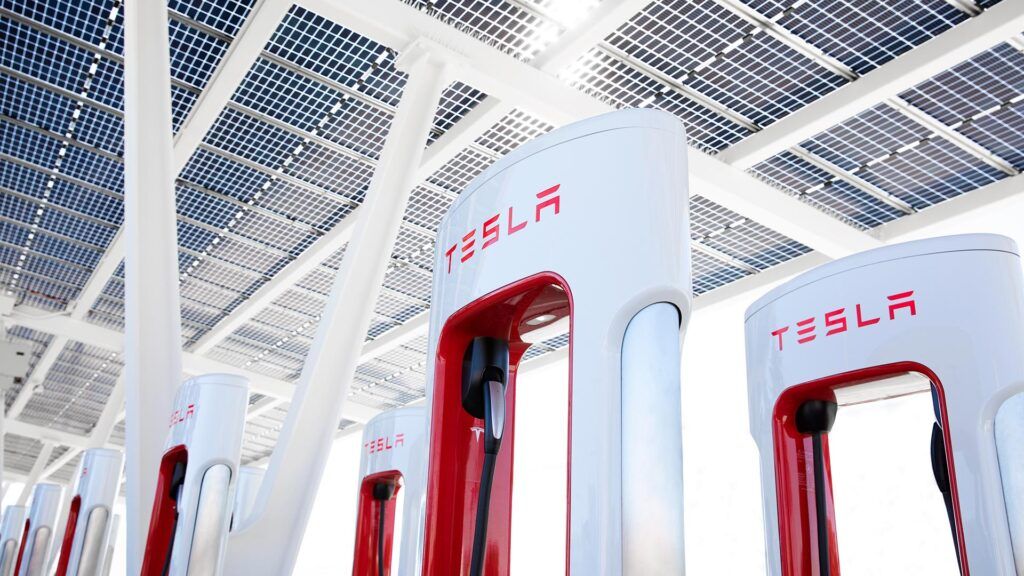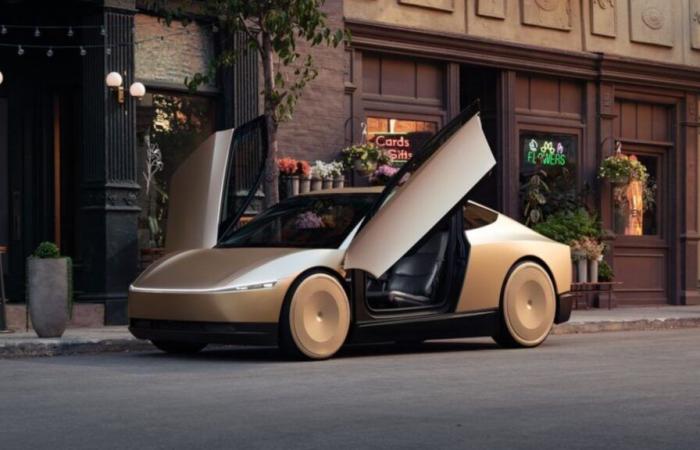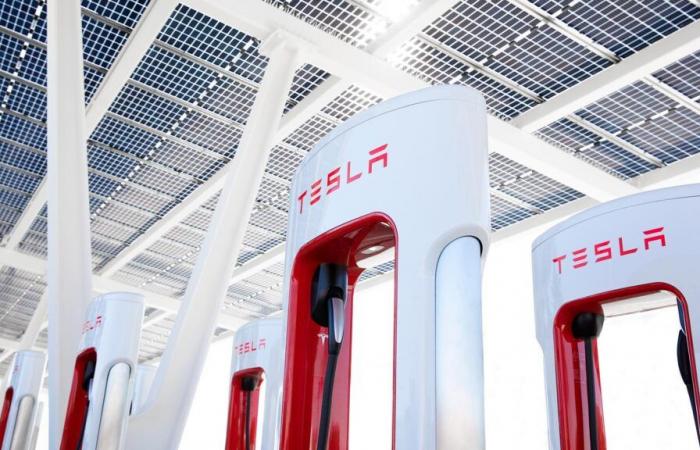If inductive charging appears to be the logical solution for autonomous vehicles, this would mean starting from scratch for the charging infrastructure.
Elon Musk could have just as easily put one of his Optimus robots in each supercharger station to act as a pump attendant: it would certainly have cost less than starting from scratch for the charging infrastructure. Furthermore, it would be cool as a service for all Tesla terminal customers. But he chose induction for his Robotaxi and Robovan.
For those who are not familiar with this technology, these are plates fixed to the ground on which the vehicles to be recharged are parked. The principle is similar to that of an induction cooktop or a wireless smartphone charger — it’s just bigger and more powerful to meet the needs of an electric car.
Tesla held its conference presenting the famous Robotaxi on October 10. Among the meager additional information revealed during the event, Elon Musk therefore highlighted the absence of a charging port, theoretically replaced by an induction system and the idea raises many questions.
Slow or rapid induction?
Elon Musk has accustomed us to being less stingy with technical information. Whether it is the Tesla Robotaxi or Robovan, Tesla’s two future vehicles have been presented in a particularly vague manner. The question of recharging the Robotaxi still attracted attention.
Tesla indicates that this vehicle will not have a charging port (NACS in the USA), this means that an individual who would like to purchase one or more of these vehicles for their personal use will find themselves blocked by the question of charging at home . After having installed terminals at home, it would be surprising if individuals said to themselves that they were going to change everything to install induction, which may require additional work.
Tesla also did not specify whether the company is working on slow induction charging, equivalent to typical 7 or 11 kW AC charging, which means that the vehicles would be immobilized for several hours, or whether it is would act as fast charging equivalent to DC (direct current) charging. In the second case, this raises questions about the charging infrastructure: who? Or ? What ? How ?
Starting from scratch by gradually abandoning superchargers?
Tesla has achieved the incredible challenge of establishing one of the best charging networks in its name in many countries. Now that the Supercharger network links the brand’s main markets with numerous terminals of different generations, is Tesla turning its back on its own network? This seems unthinkable.


With the announcement made on October 10, Tesla casts doubt on the future of its Supercharger network. If the brand’s priority (within a few years anyway) is now Robotaxi and induction charging, what will happen to the current Tesla terminal network? Let’s imagine that Tesla opts for rapid induction charging, it will again be necessary to plan new installations and significant work.
Unless Tesla is counting on the (future) managers of these Robotaxis fleets to provide suitable waiting and charging parking lots with this technology? It must be said that the Robotaxi concept also provides for a vehicle interior cleaning system carried out by robots. It’s hard to imagine the space needed to install such a device, which is all in all far-fetched.
Depending on the technology chosen by Tesla for induction charging, it is not excluded that it could be installed on existing models as a retrofit. From there to seeing it as a solution for the future after having built everything around terminals, there is reason to remain skeptical.
Newsletter Watt Else
You would like to receive the newsletter
Watt Else in your mailbox?
The data transmitted via this form is intended for PressTiC Numerama, in its capacity as data controller. These data are processed with your consent for the purposes of sending you by email news and information relating to editorial content published on this site. You can object to these emails at any time by clicking on the unsubscribe links in each of them. For more information, you can consult our entire policy for processing your personal data.
You have a right of access, rectification, erasure, limitation, portability and opposition for legitimate reasons to personal data concerning you. To exercise one of these rights, please make your request via our dedicated rights exercise request form.








